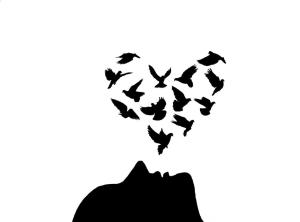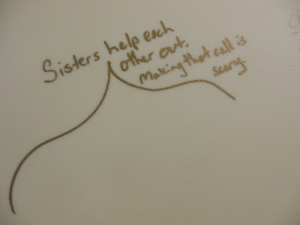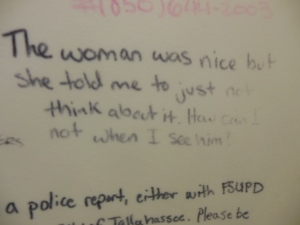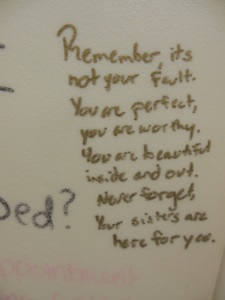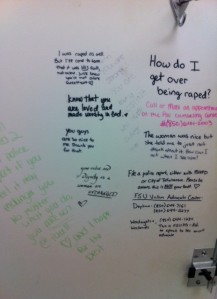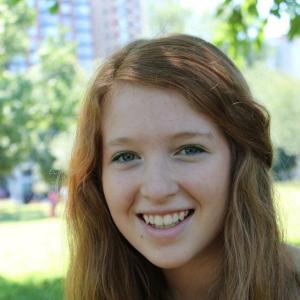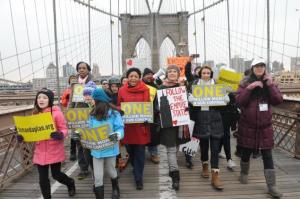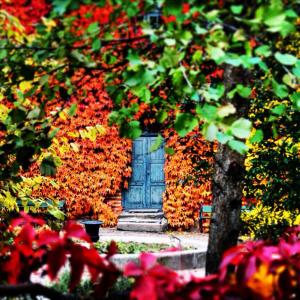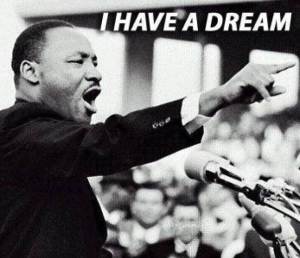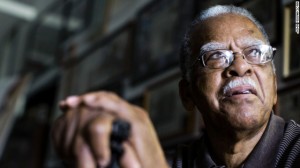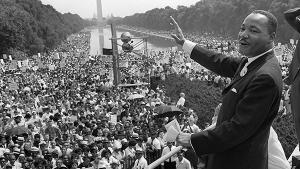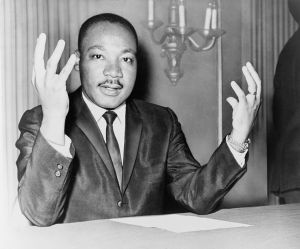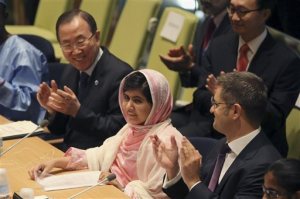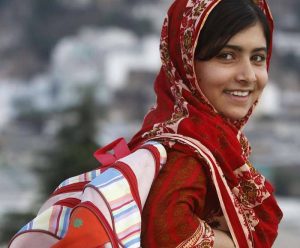by Dorothy J. Maver, Ph.D.
As people all over the country take to the streets following the Grand Jury decision in Ferguson, one thing is imminently and painfully clear. There is serious unrest and dissatisfaction at the heart of the US citizenry regarding the very system that was designed to keep people safe and secure. And the USA is not alone. All over the world we are recognizing the need for systemic change as we experience an all-systems crisis.
In response to the protests of the Grand Jury decision in Ferguson, Molly Rowan Leach, host of Restorative Justice on the Rise, and contributor to Kosmos Journal shares:
“MLK Jr once said that a riot is the upswell of unheard voices. Restorative justice is foundationed in mutual respect and a safe place for all voices to be heard, regardless of the pitch of the crime. The pattern of agony and injustice that continues with the Michael Brown case could, and I believe is soon going to be, addressed on a very deep community level–by practitioners of restorative justice, by all the wide circles of those impacted, and often with the blessing of those harmed and those authoring harm, in order to discontinue the cycles of violence that are evident at excruciating levels in this country. We are seeing an upswell of humanity calling for a better way, in places like Seattle in response to the recent school shooting, and a call for immediate and respectful actions that provide tangible avenues towards voicing pain and working towards any semblance of rebalance and implementation of longer-term systems of restorative response.”
respect and a safe place for all voices to be heard, regardless of the pitch of the crime. The pattern of agony and injustice that continues with the Michael Brown case could, and I believe is soon going to be, addressed on a very deep community level–by practitioners of restorative justice, by all the wide circles of those impacted, and often with the blessing of those harmed and those authoring harm, in order to discontinue the cycles of violence that are evident at excruciating levels in this country. We are seeing an upswell of humanity calling for a better way, in places like Seattle in response to the recent school shooting, and a call for immediate and respectful actions that provide tangible avenues towards voicing pain and working towards any semblance of rebalance and implementation of longer-term systems of restorative response.”
Director Sandy Heierbacher, in her message to the National Coalition for Dialogue & Deliberation community, stated:
“Last night, President Obama addressed the nation after it was announced that Darren Wilson would not be indicted … He talked about America’s long-standing struggle with race relations and racial inequity, and how despite considerable progress being made over the years, much more work needs to be done. He emphasized the need for criminal justice reform and for stronger police-community relations. He mentioned that there are communities that have been able to deal with this in an effective way. Here is a quote that I’d like to draw your attention to: ‘But what we want to do is to make sure that we’re also focusing on those who can offer the kind of real progress that we know is possible, that the vast majority of people in Ferguson, the St. Louis region, in Missouri and around the country are looking for. And I want to be partners with those folks, and we need to lift up that kind of constructive dialogue that’s taking place.’ ”
Director Heierbacher further shared that one of President Obama’s strategies is to work with the Department of Justice’s Community Relations Service (CRS) which has offices in 15 locations across the country.
There is a window of opportunity in the USA for authentic dialogue regarding how to address social justice, criminal justice and an increasing prison population. The approach Kosmos supports is solutions-oriented, focusing on what we want and creating the conditions for that systemic change. It seems that the US is at a tipping point regarding such an opportunity. The question remains whether it can be done through dialogue and deliberation rather than protest and prosecution.
Restorative Justice Oakland Youth Executive Director Dr. Fania E. Davis shared the essence of her work in the public schools in a recent interview:
“Learning about RJ integrated the lawyer-warrior-healer in me. Prevailing retributive justice harms people who harm people to show that harming people is wrong. It adds to the original harm. Harmed people go on to harm other people. Harm replicates, metastasizes. RJ seeks to interrupt this vicious cycle by healing the harm. RJ is a justice that is not about getting even, but about getting well. A justice that is not a battle ground but a healing ground. A justice that seeks to transform broken lives, relationships, and communities rather than damage them further. A healing justice rather than a punishing justice … Children in Oakland, considered one of the most violent cities in the nation, are today learning a new way of navigating conflict through Restorative Justice.”
In the Washington Post it was reported that U.S. Attorney General Eric H. Holder Jr. on Monday night called Brown’s death a “tragedy” that has “sparked a national conversation about the need to ensure confidence between law enforcement and the communities they protect and serve.”
We agree and also know that DMC (Disproportionate Minority Contact) is a serious problem in cities such as Ferguson. In Gainesville, Florida, the River Phoenix Center for Peacebuilding (RPCP) has been working for a safer community with Law Enforcement over the past three years. Their work includes a program directly addressing DMC, training in social-emotional skills, and is leading to embedding Restorative Justice principles in the system. This transformational comprehensive approach is now becoming a translatable process model for other communities.
Jeffrey Weisberg, RPCP Executive Director shares:
“We are so heartened by the response that we have received from officers and youth alike involved in our joint DMC program. Witnessing the shift of negative perceptions that both entities oftentimes have of each other after just a five hour interpersonal experience is extremely promising. This program feeds in beautifully to creating trusting relationships and community policing. Thanks to our Chief of Police, Tony Jones, many of our officers have taken restorative justice training in order to better understand our youth.”
As US citizens we share responsibility for what is happening in Ferguson and around the country. As global citizens we share responsibility for what is happening around the world. Let us put out a call to our policy makers local to global, demanding systemic change. And let us do this by offering solutions and ways to move through these crisis-filled times. One such solution in the area of law enforcement and criminal justice is Restorative Justice.
Dorothy J. Maver, Ph.D., educator and peacebuilder is Project Director with Kosmos Associates










